 |
Bleeding - Paramedic Overview |
2.00 |
Clinical Pharmacologist, Nicole Acquisto, spends time in the classroom with four experienced paramedics. In this session she reviews the ALS management of the Bleeding Cascade and briefly reviews Thromboelastography. |
 |
Employee Performance: Feedback (Instructor Guide) |
1.67 |
Giving feedback facilitates organizational growth and development. Feedback helps improve job performance while promoting professional and personal growth in employees.
Managers who know how to give feedback allow employees to advance themselves and grow as individuals and workers. Through proper guidance, employees acquire the necessary skills to meet their job requirements. Feedback helps build interpersonal relationships between managers and employees, while improving their self-esteem and job satisfaction.
In this course you will learn to: identify the focus of feedback, and give and receive feedback effectively, provide positive and constructive feedback, monitor performance after providing feedback, identify communication styles, and manage difficult feedback sessions, and identify when to avoid giving feedback.
This Instructor's Edition of this course includes notes and suggestions to assist you in presenting the material, whether in an in-person classroom setting, or as an instructor-led online or distance-learning course. It also provides you with the answers to questions found in mid-lesson activities, as well as in the quiz that concludes the course. |
 |
Quality Management: Causes Of Problems (Instructor Guide) |
0.67 |
In this course you will learn to: create and interpret a cause-and-effect diagram, create and analyze a Pareto chart, create and interpret a scatter diagram, and create an interrelationship diagram and use it to identify root causes.
This Instructor's Edition of this course includes notes and suggestions to assist you in presenting the material, whether in an in-person classroom setting or as an instructor-led online or distance-learning course. It also provides you with the answers to questions found in mid-lesson activities, as well as in the quiz that concludes the course. |
 |
Strategic Decision Making: Decision Results (Instructor Guide) |
0.84 |
After implementing a decision, you should review the process you followed to reach it, regardless of the outcome. There are guidelines that you can use to review and learn from your decisions. You also need to be aware of the various pitfalls to avoid when learning from your decisions.
You can improve your decision making skills by examining a variety of other sources, such as the experience of people in your company and the decisions of other companies. You should not overlook these opportunities, because they will improve your decision-making skills, and help you to avoid similar mistakes in the future.
In this course you will learn to: identify the guidelines to follow and pitfalls to avoid when reviewing your decisions, and identify actions you can take to learn from the experience of others.
This Instructor's Edition of this course includes notes and suggestions to assist you in presenting the material, whether in an in-person classroom setting or as an instructor-led online or distance-learning course. It also provides you with the answers to questions found in mid-lesson activities, as well as in the quiz that concludes the course. |
 |
Creating Respect and Safety for Paraprofessionals |
1.00 |
Keeping school-age children respectful and safe is a major priority for schools. It requires setting up the classroom environment to promote safety and using effective strategies for monitoring and maintaining a safe environment. Because students are growing towards independence, it is also essential to help keep them safe from harm as they participate in school experiences. |
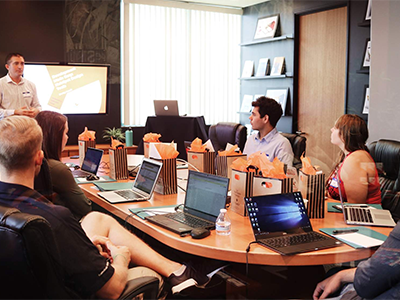 |
Job Success |
1.00 |
In this course, you will learn some tips and strategies for succeeding in your job, whatever it might be. You will learn how to get the most out of your employment as well as how to better contribute as an employee. You will also learn to recognize the importance of workplace communication skills and their development. |
 |
Workplace Basics |
1.00 |
Starting a new job is intimidating enough, even more so when you are confused about how the basic workplace functions. This course will take you through the most essential things to know. This way, you can become the most successful worker possible. |
 |
Animal Behavior 1: Why Study Animal Behavior? |
1.00 |
Animal behavior is a topic that has fascinated people for centuries. The first course in the series will give an overview of behavior and highlight the many reasons to study animal behavior, the history of behavioral research, and the many different fields that study animal behavior. |
 |
Animal Behavior 2: Application of Animal Behavior Research in Zoos and Aquariums |
1.00 |
Modern accredited zoos and aquariums strive to use behavioral data to make many management decisions about the animals under their professional care. This course will provide an overview of many different uses of animal behavior in a zoological setting, including the ability to examine indicators of animal welfare. |
 |
Employee Performance: Conflicts (Instructor Guide) |
0.67 |
In any organization, there are individuals with unique personalities and responsibilities. Conflicts are an inevitable part of employee interaction. Knowing how to resolve conflicts when they arise is vital to the well-being of any company.
In this course you will learn to: identify common myths associated with workplace conflicts, common reasons that conflicts arise, and types of workplace conflict, and distinguish between conflict management and conflict resolution.
This Instructor's Edition of this course includes notes and suggestions to assist you in presenting the material, whether in an in-person classroom setting, or as an instructor-led online or distance-learning course. It also provides you with the answers to questions found in mid-lesson activities, as well as in the quiz that concludes the course. |
 |
Whole Child Approach |
1.25 |
This course covers the Whole Child Approach. It is just one out of many education courses we offer. This course will help you develop new knowledge about the Whole Child Approach and why it is significant in education. It will teach the importance of character development, social and emotional learning (SEL), personalized learning approaches, interventions, and assessments. This course will also explain culturally responsive teaching and how parent and community engagement is crucial to students' success. |
 |
Structural Search Operations (NYS12) |
1.00 |
This lesson familiarizes the firefighter with structure fire search and rescue operations. The lesson reviews primary search methods including Orientated, TIC Led and Vent Enter Search. Methods for conducting structural search as well as managing occupants and victims are introduced. These methods are based on operational risk assessment with firefighter safety as the prime focus. The lesson is evaluated with in-lesson activities and a final multiple choice quiz. |
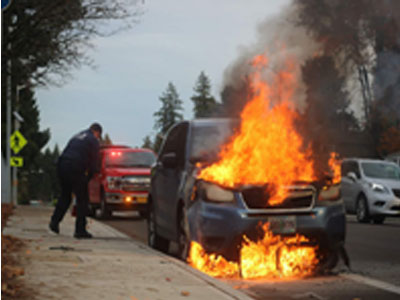 |
Vehicle Fire Operations (NYS05) |
1.00 |
This course is a general overview of safe firefighting operations at vehicle fires. The lesson discusses proper risk management of a vehicle fire through the identification of hazards and application of safe, effective, and efficient operations. Several types of vehicle fires are described and hazards associated with each are identified. The tactical needs and priorities of vehicle fire operation are reviewed. Finally, a safe procedure for performing suppression tasks at a vehicle fire is introduced. The course is evaluated with a multiple-choice quiz. The firefighter must achieve a score of 80% or better to pass the course. |
 |
Basic Building Construction (NYS04) |
1.00 |
This is a basic lesson for the introduction or review of building construction for the firefighter. The lesson defines five types of building construction and identifies the risks and hazards associated with fighting fires in these structures. The lesson is evaluated with a final multiple-choice quiz. A grade of 80% or better is required to pass this course. |
 |
Fire Behavior Basics (NYS02) |
1.00 |
This lesson introduces the basic chemistry and physics of fire behavior. The lesson defines combustion, reviews the fire triangle and components of the fire tetrahedron. The stages of fire develop and accompanying characteristics are discussed with a focus on heat transfer and how it plays a part in fire develop. The lesson is evaluated using a brief quiz covering the material included in the lesson. |
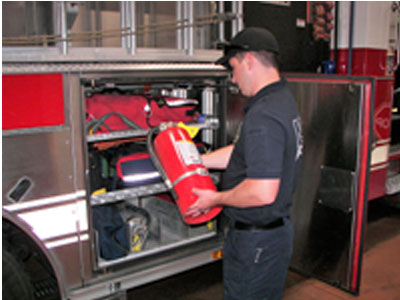 |
Fire Extinguishers (NYS03) |
1.00 |
This lesson reviews the identification, selection, and use of different types of fire extinguishers. The lesson begins with a review of the basic science of fire. The classifications are defined and described and the extinguishers that meet those classifications are identified. Fire extinguisher maintenance is described and reviewed. Finally, the PASS method of fire extinguisher operation is defined and described. |
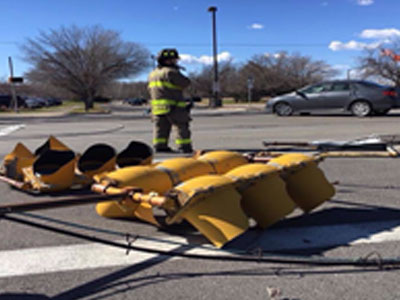 |
Utility Pole Incidents (NYS05) |
1.00 |
This is a basic lesson for the introduction or review of the utility pole for the firefighter. The lesson defines types of utility poles and identifies the risks and hazards associated with operating at incidents that involve them. The lesson is evaluated with a final multiple-choice quiz. A grade of 80% or better is required to pass this course. |
 |
Employee Performance: Communication (Instructor Guide) |
1.00 |
Communication is effective when a listener clearly understands a speaker’s message. Good communication fosters a productive exchange of ideas while minimizing the possibility of confusion or misunderstanding.
When trying to communicate with a difficult employee, you must be willing to work with that person to correct the problematic behavior. Openly discussing the behavior can help you find a mutually acceptable solution.
In this course you will learn to: communicate clearly and effectively by using verbal and nonverbal communication, and improve your listening skills, and communicate with difficult supervisors and coworkers, take a proactive approach when dealing with difficult employees, and identify types of employee dismissals.
This Instructor's Edition of this course includes notes and suggestions to assist you in presenting the material, whether in an in-person classroom setting, or as an instructor-led online or distance-learning course. It also provides you with the answers to questions found in mid-lesson activities, as well as in the quiz that concludes the course. |
 |
Instructional Planning for Paraprofessionals |
0.50 |
This course covers the instructional responsibilities of a paraprofessional in the classroom. It is just one of many paraprofessional courses we offer. This course will help you understand what your role as a paraprofessional is in supporting students through instruction and how to support teaching and learning. |
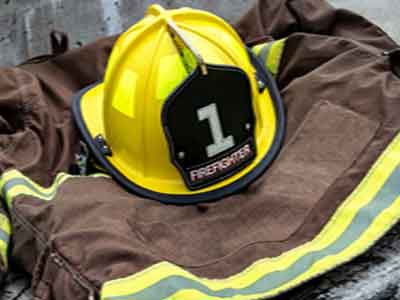 |
PPE Care and Maintenance |
1.00 |
This course describes the required care and maintenance necessary to keep your personal protective equipment in service and able to afford you the highest level of protection. The objective is to promote competency in personal protective equipment inspection procedures based on NFPA 1851 standards. Students should also familiarize themselves with agency guidelines, policies, procedures, and best practices for documenting and reporting concerns with issued personal protective equipment. |
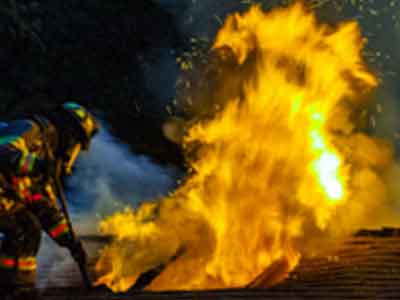 |
Tactical Ventilation |
1.00 |
This course discusses tactical ventilation on the fire-ground. The course discusses ventilation as the introduction of fresh air into the building and identifies the affects of ventilation on modern fire behavior. Ventilation tactics and tasks are reviewed and safety considerations for this operation are identified. The lesson is evaluated with a 15-question multiple-choice quiz. A grade of 80% is required to pass this course. |
 |
Ground Cover Fires |
1.50 |
This course is an introductory level course that introduces the basic concepts of fighting fires that involve natural ground cover. This course describes fire behaviors associated with ground cover fires, identifies the types of equipment as well as methods used to combat these fires. The lesson also identifies specific hazards associated with ground cover fires and describes methods for mitigating the risk of those hazards. |
 |
Introduction to Fireground Size-up |
2.00 |
This course is an extensive introduction to fireground size-up and is a prerequisite for all other Vigilant size-up courses. This lesson defines the term size up and describes its purpose in fireground operations. The elements of a proper size-up are defined and described. The course introduces a five-step procedure for implementing the size-up process on the fireground. Each step of this procedure is defined and described with an explanation of the elements that are identified during each step. The lesson concludes with an overall summary and final evaluation. |
 |
Introduction to Fireground Communications |
0.50 |
This course defines communication and identifies five components of a fireground communication model. Each component is described in detail and a procedure for implementing the components is reviewed. The different types of common fireground communications are described and examples of each are given. |
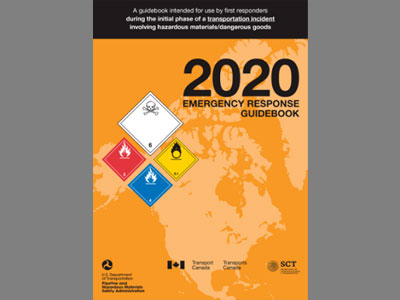 |
Emergency Response Guidebook Activity |
1.50 |
This course is an activity that requires the first responder to utilize the Emergency Response Guidebook to solve a variety of problems. The solution to each of these problems can be found using the 2020 Emergency Response Guidebook Version. Students will need to have a copy of the Emergency Response Guidebook Version 2020 to complete this activity. A 2020 Emergency Guidebook PDF is available for download in this lesson if a copy of the book is not available to the student.
It should be noted that this is an in-service training activity. The student must have prior knowledge and training regarding the Emergency Response Guidebook prior to engaging this activity.
|


























